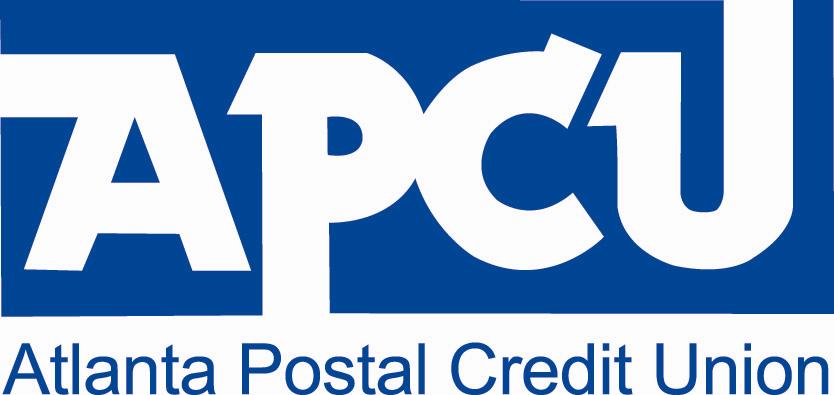The Government’s Continuing (Tortuous) Pursuit of Fixed-Price Bargain Purchase Options
Last fall saw the introduction, in the House of Representatives, of a bill (H.R. 5137) intended to facilitate GSA’s ability to come by bargain-priced purchase options in its real property leases. This paper examines the bill, and assesses the possible impacts on GSA leasing practice, should it be enacted into law. In short, this bill, introduced on Nov 18, 2019 by Representative Greg Pence, a member of the House Transportation and Infrastructure Committee, seeks to overturn the present OMB lease scoring treatment of bargain-priced purchase options. First, a bit of background. Appendix B to OMB Circular A-11 sets forth the rules governing the budgetary scoring of leases. The Appendix establishes six criteria for classifying any lease as an operating lease. [GSA invariably seeks operating lease, rather than capital lease, designations since for operating leases GSA only needs to have the budget resources available at lease signing to cover the current year’s rent, whereas for capital leases and lease purchases, it needs budget resources for the full firm term. GSA is perennially budget-constrained, which it is why it leases many of the properties it would rather own.] All six of the scoring criteria must be met for an operating lease designation. More explicitly, if any specific criterion is not met, even if the other 5 are met, the lease will be classified as a capital lease or a lease-purchase. The second criterion reads as follows: “The lease does not contain a bargain-price purchase option”. On the next page of the Appendix, among “guidelines…used in distinguishing between operating leases, capital leases and lease purchases” is the following bulleted item:
Renewal and purchase options. If the lease agreement contains an option to renew that can be exercised without additional legislation, it will be presumed that the option will be exercised. If the lease agreement contains an option to purchase at less than fair market value (at the time the option is to be exercised), and the option can be exercised without additional legislation, it will be presumed that the option will be exercised.
H.R. 5137 is a very short bill and it does one thing only: it would require that GSA secure a specific appropriation before it can exercise any “bargain-price option at less than fair market value” in any lease agreement executed subsequent to January 1, 2019. Here’s the full text of the Bill:
Be it enacted by the Senate and House of Representatives of the United States of America in Congress assembled, SECTION 1. LIMITATION ON DISCOUNTED PURCHASE OPTIONS. Section 585 of title 40, United States Code, is amended by adding at the end the following: “(d) Any bargain-price option to purchase at less than fair market value contained in any lease agreement entered into on or after January 1, 2019, pursuant to this section may be exercised only to the extent specifically provided for in subsequent appropriation Acts or other Acts of Congress.”.
The drafters’ intent is to intercept an automatic lease-purchase designation for leases with bargain-price purchase options. Here’s the logic of how this would work: because the Appendix B guidance presumes that any purchase option that can be exercised “without additional legislation” will be exercised, the obverse is also true (although this is not explicit in the Appendix B language). That is, if additional legislation is required to exercise an option, then the presumption is that the option will NOT be exercised. Then the scoring rules, as written, enable scorekeepers to ignore the presence of a bargain-priced purchase option. This, in turn, enables the lease to qualify as an operating lease (assuming the other criteria are also met). So, because H.R. 5137 makes it mandatory that GSA seek an appropriation to exercise any “bargain-price” purchase option, no lease containing such an option would be classified as a lease-purchase. Under present law, for any lease, if GSA wanted to exercise a purchase option---bargain or not---with a price above the prospectus threshold (currently $3.095 mil) then GSA would need to submit a prospectus request to Congress, and await authorizing committee resolutions before it proceeded. Further—again, for options above the prospectus threshold – GSA would only be able to proceed with the purchase upon receiving a line-item appropriation. On strict legal grounds, resolutions by the authorizing committees are not required; only the appropriation is required. (See: The GSA Prospectus Requirement for Leases: Unconstitutional Committee Veto, or Legitimate Congressional Oversight Mechanism? JGRE Spring 2017 for an in-depth discussion of the whether authorizing resolutions are legally required, rather than sought by GSA as a matter of policy in deference to “inter-branch comity”.) Since under present law, GSA would already have to seek “additional legislation” for all options greater than the prospectus threshold, this bill only helps GSA avoid lease-purchase designations for leases with purchase option prices that fall below $3.1 mil. All leases with purchase options priced above the prospectus threshold are alreadyprotected because GSA can’t exercise them without additional legislation. Given that, this is a very curious piece of legislation. One wonders, why bother? What’s the point of crafting a legislative fix to carve out a scoring exception for very modestly-priced purchase options? This assumes that such options would only be offered for modest-sized buildings, and why would GSA want to own a lot of those? But that assumption may be wrong: the drafters may be intending (hoping?) that lessors to the government will offer such low-priced options on substantially-sized buildings. Those would be bargains indeed. If the legislative intent is, in fact, to come by nominally-priced purchase options for large leased assets that are clearly worth many multiples of the purchase option price, then the question arises as to whether GSA is paying for that bargain through the lease term. Again, the OMB prohibition on bargain-priced purchase options is built on the precept that there is no such thing as a free lunch: If ownership can be had at the end of a lease term for an obvious bargain, then the government has likely been paying for the asset throughout the lease term---which signals a lease-purchase. The open question is whether OMB will construe such a lease, where the government can exercise a purchase option for a nominal value, as an operating lease, regardless of whether additional legislation is needed to exercise the option. GSA will argue that there are built-in protections to ensure that it does not overpay during the lease term for a bargain-priced purchase option. First, is the motivation of lessors to continue to own the real estate they lease to the government. Most owners are not disposed, all other things being equal, to make purchasing the asset an attractive prospect for the government. If pressed by GSA to offer a fixed-price purchase option, many lessors will seek to price that option at what they will estimate market value to be at the time the option matures, using reasonable assumptions about the appreciation potential of the property. Second, the Government already has in place a set of controls to prevent lessors from over-charging in the lease. These controls include: the rental rate cap in the prospectus itself (for prospectus-level transactions), the GSA bullseye report, and the 90% scoring test. [That test is a separate scoring criterion: unless the present value of the minimum rent payments over the lease term is below 90% of the asset worth at lease inception, the contract is a capital lease]. These controls support the idea that there isn’t a lot of room for a lessor to raise the rental rate to offset the value loss conferred by a very favorable purchase option. That’s not to say there is NO room. And because a rental rate adjustment is the sole lever available to a lessor to seek compensation for giving a favorable purchase option as a leasing concession, there will be pressure to raise this number if GSA, in negotiations, pushes for favorable option pricing. It’s reasonable to conclude that, generally, GSA is either NOT going to come by bargain basement purchase options because it won’t accept higher rents during the lease term, or it will get those options, but it will pay for them in the rent, because GSA does capitulate on the rental rate. There is at least one scenario in which the government might come by a clear bargain: the case of a prospective lessor (likely not an incumbent landlord to the government) who happens to be a merchant-builder-type developer. Such an actor might propose a fixed price purchase option that is roughly the equivalent of the balloon payment required to retire his debt at the conclusion of the initial lease term. The merchant builder would likely be taking all of his equity, and his development fee, out of the project at the time of his initial (permanent) financing. There’d be little incentive for such a developer to maintain the asset during the lease term, however, and he would likely not be making many capital improvements late in the lease term, on the presumption that the government will be exercising its favorable purchase option. But what kind of property might the government be getting as a consequence? Squeezed of value by GSA’s lowest price technically acceptable award mantra, it will likely be a property with low land cost (on the city fringe), “builder-grade” components, and devoid of architectural distinction: a possible clunker. Is this the kind of building GSA aspires to own?
The most coherent, benign reading of the Appendix B language is that it was designed to countenance reasonably-priced purchase options that would give the government the opportunity to exercise an option where property appreciation out-paced the lessor’s expectations. Whether that appreciation was due in whole or part to the government’s presence (e.g., serving as a “pioneer” tenant in a transitional neighborhood that rapidly gentrified after the federal end-user moved in) or whether it was due to the general economic development of the community, the government would have the potential for enjoying some of the upside. Of course, since the option is at GSA’s sole discretion, there’s no downside for the government: if property values fall, or don’t appreciate at the rate implicit in the option price, GSA simply passes on the option. Some would argue that real estate risks belong with the owner; that GSA shouldn’t get to share in the upside but have no part of the downside. Conceptually, that is true, but if GSA has the leverage to extract the concession contractually, through competition, then that’s the way the world works and all must adapt.
But this last paragraph frames the issue in the context of approximate market-priced options. This is entirely different from the ostensible intent of H.R. 5137, which, in contrast, seems to seek to protect only bargain basement-priced purchase options: immediately recognizable bargains, and all below the prospectus limit. How else to interpret the phrasing in the bill: the explicit mention of “bargain-price” purchase options rather than categorically, all purchase options? In fact, by its exclusive focus on “bargain-price” options, the bill betrays its purpose: to defeat the scoring rule that would render leases containing bargain-price options as lease-purchases. One quirky outcome of this bill, if passed, is that GSA would be able—without Congressional approval---to exercise market priced (non-bargain) purchase options below the prospectus threshold, but it would not be able—without congressional approval---to exercise bargain-priced purchase options below the prospectus threshold. That, on its face, is truly nonsensical, for Congressional oversight and budget control is, and should be, directed at the most challenging and momentous of Executive Branch actions, not at those of trivial price and consequence. So, to oblige Congress to make an explicit appropriation before GSA can exercise a bargain-price purchase option below the prospectus threshold looks like, and would in fact be, extreme micro-management. This bill, quite simply, will plug a hole in GSA’s exempt coverage (from lease-purchase designations) of bargain-priced purchase options. Heretofore, only options priced above the prospectus threshold were exempt; this bill would add those bargain-priced options below the prospectus threshold. Having withstood court challenges on the use of evaluated, assignable, fixed price purchase options for the SEC headquarters procurement, GSA is likely poised to begin using this approach on other lease procurements where the expiring lease constitutes 100% or close to 100% government occupancy of the building. Will these procurements produce bargain-priced purchase options for the government? Only time will tell. Again, the pursuit of bargain-priced purchase options raises a few risks for the government (as catalogued in an earlier article: Has GSA Found a Way to Sever the Gordian Knot of Lease Scoring? in the JGRE Summer 2019):
This whole purchase option enterprise, however, begs the question: if the government wants to own more buildings, why not acquire them outright at the start? Why design this tendentious evaluated fixed-price purchase option structure to present the government with an option 15 or 20 years in the future? GSA’s most likely answer is that it doesn’t have the budget resources today to acquire the building outright. But if appropriations aren’t available now, why does anyone think the federal budget situation will be more favorable decades hence? Over the past 50 years, federal budget pressures have only grown more, not less, intense. So, if GSA can’t buy today, there’s little reason to assume it will be in better budget circumstances in the future. Moreover, since GSA is hard-pressed in terms of budget/appropriations to maintain in good repair its current portfolio of owned properties, why would GSA want to expand the owned portfolio? Further, why would it want to grow the government-owned portfolio with buildings that have 15 to 20 years (or more) of age on them, and likely require modern appointments and updated building systems? Why not build or acquire new building product? To underscore that point, since GSA of late only sparingly engages in lease acquisitions that result in ground-up construction, the lion’s share of the opportunities to deploy this technique will involve buildings that are already under lease to GSA. That is, GSA would be seeking to secure a bargain-priced purchase option via a replacement lease action, which means that, if the incumbent landlord is the successful bidder, the building will likely be 25 to 35 years old or older by the time the option matures. Capital expenditures for such vintage product might be substantial, as the FDA lab in Cincinnati shows. The strongest argument GSA can summon for this initiative is that, while it doesn’t ordinarily have the funding for fair market value building purchases, a more compelling case for acquiring a leased building could be made if the purchase price were an obvious bargain. The questions remain: will GSA actually come by genuine bargains? And will the allure of adding aged product to the owned portfolio indeed sway appropriators?
|


